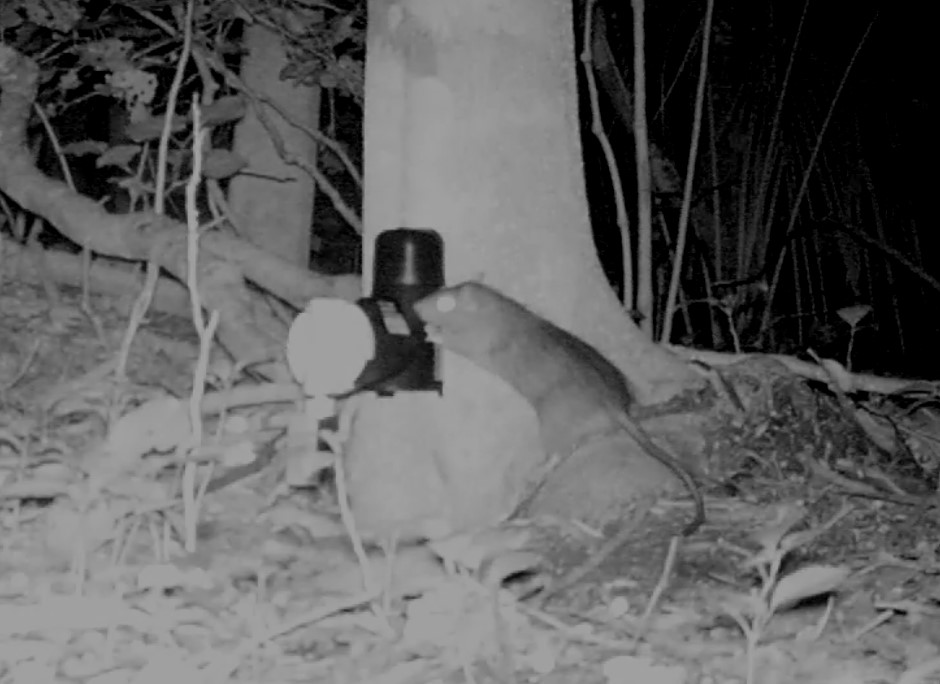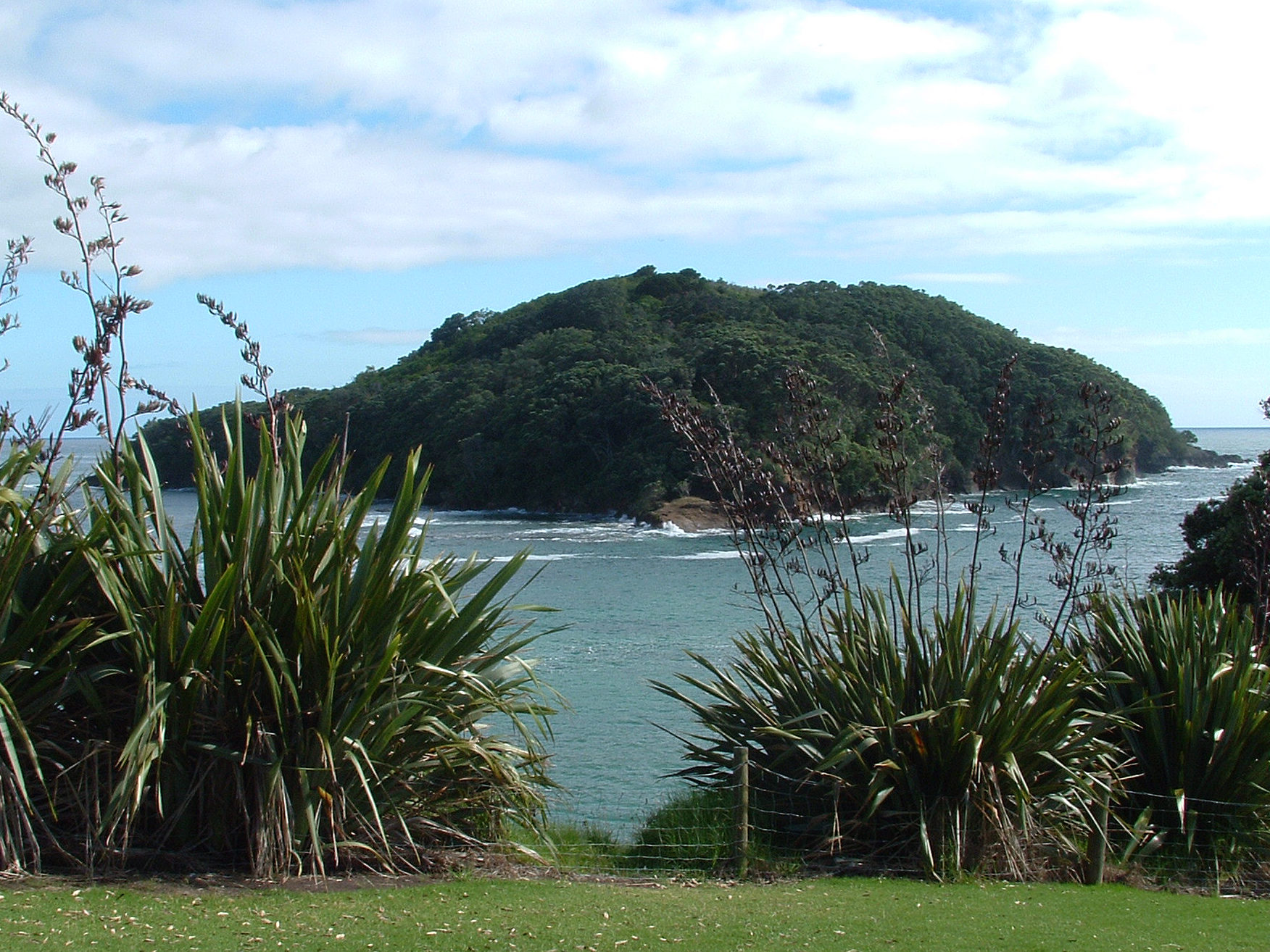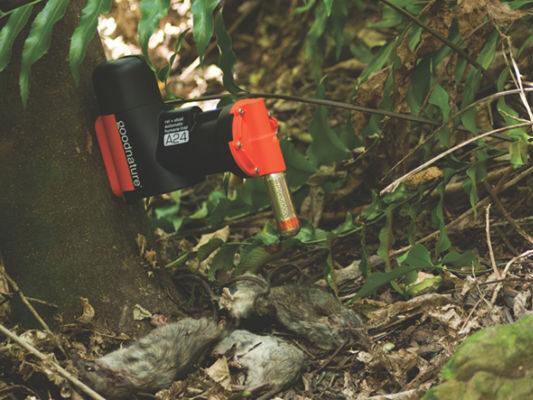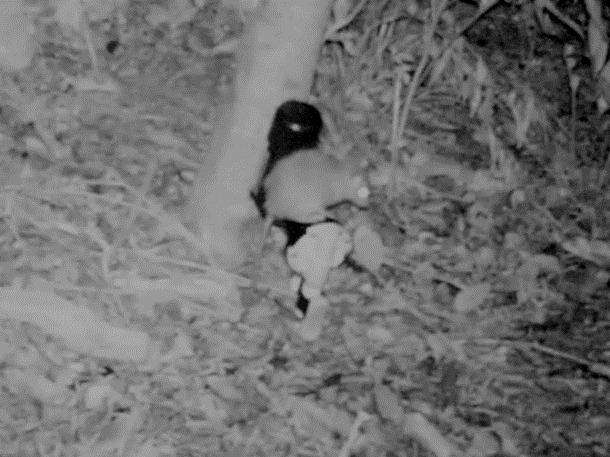Good for rat population control, but not a stand-alone tool – that’s how two scientists have described the success of self-resetting traps on Goat Island.

In a recent study, Auckland University biologists Dr Markus Gronwald and Dr James Russell tested 10 Goodnature A24 self-resetting traps on Goat Island (Te Hāwere-a-Maki).
They found that while the traps were good at knocking down rat numbers, they were not successful at completely removing the population.
Markus and James had three goals for their study.
- To find out if Goodnature A24 traps (with the help of a few single-kill traps) could reduce – and ideally eradicate – rat numbers on a small island
- To see if rats would be wary of interacting with the A24s
- To see if behaviour around the traps would be influenced by the number of rats on the island
Their findings would be used to inform trap design and to assess the overall suitability of the A24 traps as a control tool.
Pesky and persistent: rat control on Goat Island

Goat Island is a small (9.3 hectare) island lying just north of Auckland (Tāmaki Makaurau). It is an important nesting ground for many native species, including kororā (little penguins) and ōi (grey faced petrels).
Unfortunately, the island’s close proximity to the mainland means rats – and the occasional sneaky stoat – can easily swim across when the tide is low. Invasive ship rats have established a population on the island as a result, posing a risk to native seabird colonies.
Past attempts to remove rats from the island have been continuously hindered by reinvasion, with new rats swimming across from Auckland’s east coast.
Self-resetting traps might be the answer
Like other island locations, controlling rat numbers on Te Hāwere-a-Maki is further complicated by the additional labour involved. The extra time required to reset occupied traps – due to having to travel to the island – allows time for population numbers to bounce back.
Self-resetting traps like the A24 are a low-maintenance alternative and could be a key part of future predator control efforts on islands.
“It’s a fantastic idea to have a trap that sets itself, especially on an island that you can’t go to every day or week,” says Markus.
Markus and James placed one A24 self-resetting trap – loaded up with self-dispensing tasty lure (bait) – per hectare of the island. Alongside the single-use DOC 200 traps already in place, there were a total of two traps per hectare.
From August 2016 through to October 2017, the traps were monitored via motion-sense cameras.
Population size affects trapping success
Video footage shows the A24 traps performed well to begin with. The rats approached the traps just hours after their introduction. After the first three days, all of the traps were triggered at least once.

However, catch numbers declined over time. Eventually, the number of rats killed was not enough to offset any newcomers, making eradication impossible. Did the rats simply learn to avoid the traps?
“No, the traps themselves were not being avoided. Even when the traps weren’t being set off, the rats were still interacting with the traps,” Markus says.
“They would jump on the trap, sit on it, chew it, put their head in the trap – just not high enough to activate the trigger mechanism. They did all kinds of stuff.”
So why the low catch-rate?
“There was still something about the trigger that represented a risk to the rats. And, basically, the rats just weren’t hungry enough to take that risk.”
“When population numbers go down, the pressure to find food is reduced,” Markus explains. “When you have lots of rats and you put A24 traps out, they kill a lot of rats immediately. But once numbers go down, the lure is not as appealing.”
It makes sense: why risk your neck for extra food when there’s plenty of tasty stuff to go ‘round? Unfortunately, this poses a challenge for relying solely on the traps when population levels are low.
Promising signs, but more research is needed

The study findings suggest that while the Goodnature A24 traps are useful as a population control tool, at this stage they are not enough to eradicate rats from a small island.
James and Markus suggest that learning more about rats’ behaviour towards the traps – such as what they like to eat the most, and when – will improve the success of trapping projects in the future.
“I think research should look into the benefit of a super lure – food that is much more attractive when compared to readily available seeds on a forest floor. There’s always room to improve there, so it would be a valuable thing to do.”
Markus also noted that there also appears to be something associated with the trigger mechanism that the rats will avoid – even when happily interacting with the trap as a whole.
“Rats don’t like going into a dead end – it spells danger for them. Housing the trigger in a tube with an opening at the end may help. Or making the tube itself clear.”
So is a self-resetting trap worth the investment?
“For general control, the A24 still performs well,” Markus says. “I don’t have to service it. The trap could easily have been running for four months without any problems.
“If you’re struggling to eliminate the last of a rat population, you’ll need a few other tools – and some lateral thinking – to get rid of your rats,” he says.
Controlling mainland rat populations will help island efforts
Keen to rid your own backyard of rats? You can make a difference with this backyard trapping guide.
Plus learn how to get the most out of your trap with our tips and tools.
Want to find out more about the predator control efforts on Goat Island? Read Markus and James’ full published paper here.

